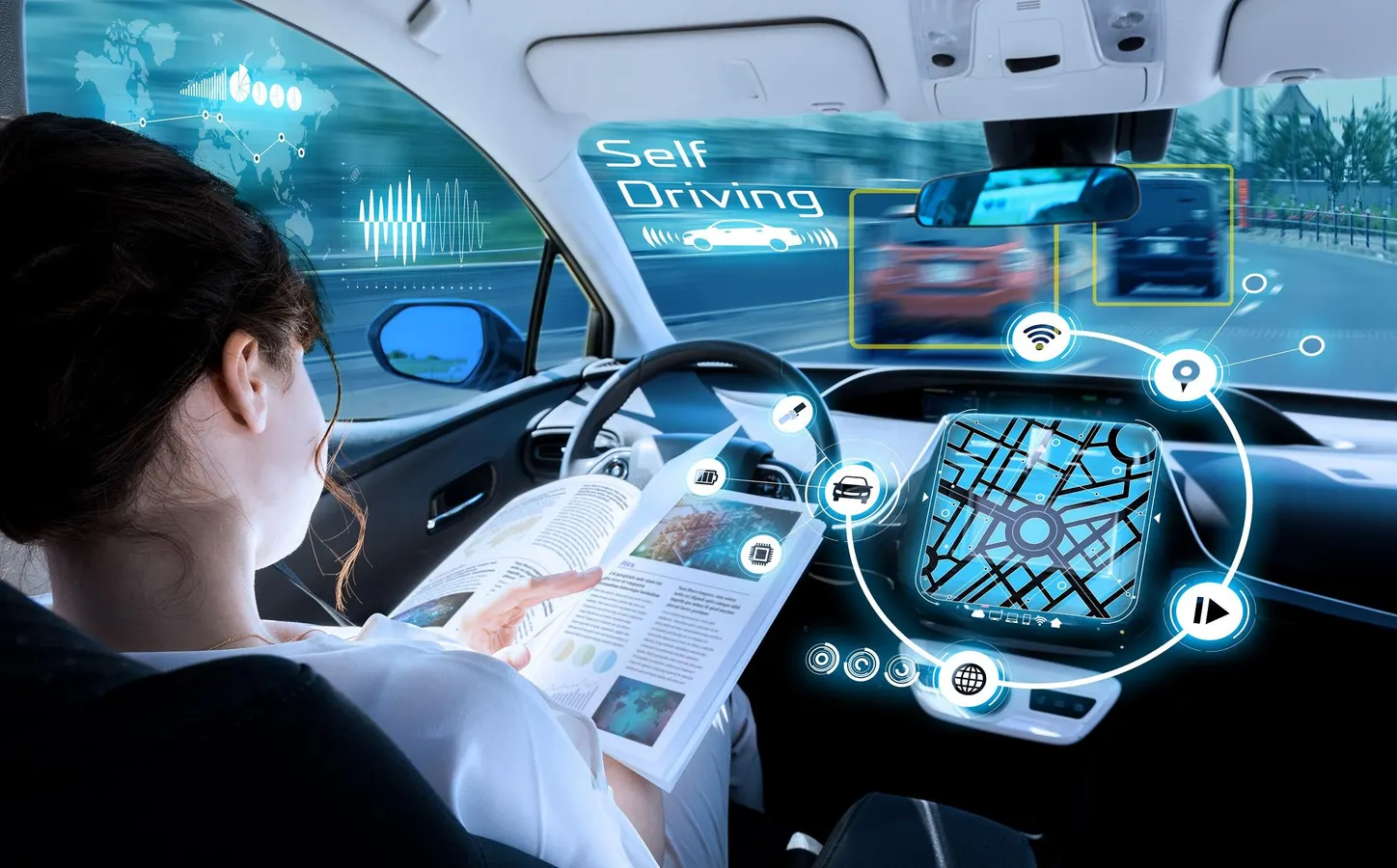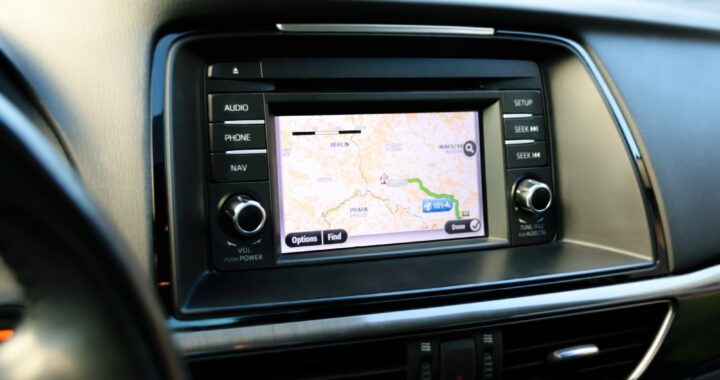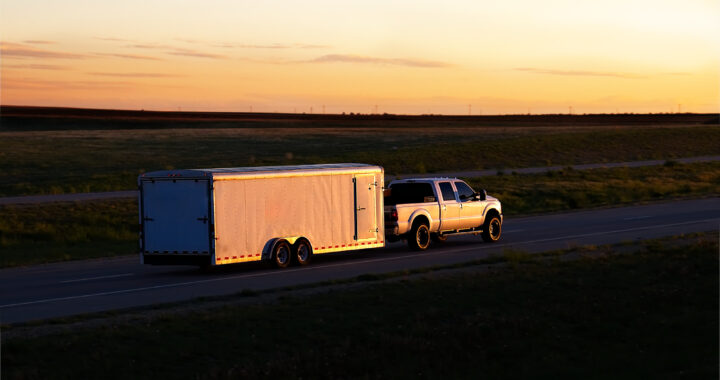What is a self-driving car? How self-driving cars work

Everyone from engineers and futurists to regular commuters is fascinated by self-driving automobiles in the dynamic world of transportation technology. The once-impossible concept of fully driverless vehicles is already a reality, and they will undoubtedly alter the way people travel around cities and highways. To begin with, what is a self-driving cars and how do these technological wonders function?
Come explore the sophisticated technologies and principles that drive these state-of-the-art vehicles with us as we explore the intriguing realm of autonomous mobility. On this adventure into the transportation of the future, fasten your seatbelts!
What is a Self-Driving Car?

Vehicles that can perceive their surroundings and navigate without human intervention are called self-driving cars, autonomous vehicles, or driverless cars. These vehicles use a set of sophisticated technology to sense their environment, analyze data, and make judgments autonomously, essentially replacing human drivers.
No human input is required for any aspect of a self-driving car’s operation, including but not limited to: finding a parking spot, navigating through traffic, and obeying traffic signals. While complete autonomy is the end aim, present self-driving car technologies still necessitate human intervention to varied degrees.
How Self-Driving Cars Work: A Fusion of Cutting-Edge Technologies
The secret to autonomous vehicles is a conglomeration of state-of-the-art technologies that have been painstakingly integrated to create this remarkable phenomenon. Let’s take a look at what these cars rely on:
1. Perception Systems
To understand their environment, autonomous vehicles need a complex network of sensors and imaging technology. The “eyes and ears” of the car, these systems take in all the information about the surroundings and process it thoroughly.
- Lidar (Light Detection and Ranging): The Light recognition and Ranging (Lidar) technology allows for accurate object recognition and localization by using laser beams to generate comprehensive 3D maps of the vehicle’s environment.
- Radar: Even in low-visibility or bad-weather situations, radar sensors can reliably determine the distance to surrounding objects and identify possible obstructions.
- Cameras: The vehicle’s AI systems analyze and make decisions based on high-resolution images captured in real-time by the cameras.
2. Artificial Intelligence and Machine Learning
An effective blend of AI and machine learning algorithms is the backbone of autonomous vehicles. These advancements in technology allow the car to read the data gathered by its sensory systems, process it, and make real-time judgments based on that interpretation.
Autonomous vehicles are able to adapt to new situations and enhance their decision-making skills through the use of machine learning. They are able to replicate the mental processes of human drivers by iteratively navigating complicated traffic conditions, predicting possible dangers, and reacting appropriately.
3. Connectivity and Communication
Rather than being in a vacuum, self-driving cars are an integral aspect of a complex web of relationships. Autonomous vehicles, infrastructure, and other road users are able to share data seamlessly thanks to advanced communication technologies like 5G networks and vehicle-to-everything (V2X) communication.
Autonomous vehicles are able to alleviate traffic jams and enhance traffic flow thanks to the continuous flow of information that enables them to coordinate their movements, share real-time traffic updates, and optimize route planning. Innovative mobility services, like autonomous ridesharing and on-demand transportation, are made possible by this connection, which further improves accessibility and convenience for everyone.
4. Control Systems
The self-driving car’s decision-making process is backed by advanced control systems that ensure the smooth execution of its decisions. These systems work in tandem with the vehicle’s acceleration, steering, and braking systems to make coordinated and accurate manoeuvres possible.
In order to accomplish complicated operations with ease and accuracy, as well as to adapt to new circumstances, sophisticated algorithms and actuators collaborate.
Levels of Autonomy: From Assisted Driving to Full Self-Driving

There are a number of levels of autonomy that have been specified by industry standards on the road to completely autonomous cars. The car can control some parts of the driving task at an aided driving feature level, and it can run totally without human interaction at a fully autonomous level.
- Level 0 (No Automation): A vehicle with no automated driving capabilities is considered to be at Level 0, meaning that the entire driving process is the responsibility of the human driver.
- Level 1 (Driver Assistance): At Level 1 (Driver Assistance), the car can give the driver a hand with the wheel or the brakes, but not both at once.
- Level 2 (Partial Automation): Under some conditions, the driver can handle the vehicle’s acceleration and deceleration as well as steering, but they still need to keep their eyes on the road.
- Level 3 (Conditional Automation): At Level 3, also known as Conditional Automation, the vehicle has some autonomy capabilities, but a human driver is still required to step in and take over if necessary.
- Level 4 (High Automation): Within certain operational design domains (ODDs), the vehicle can function autonomously in most conditions, indicating Level 4 (High Automation).
- Level 5 (Full Automation): At Level 5 (Full Automation), the car can drive itself around any obstacle, in any weather, and under any supervision.
The automobile industry is moving towards more autonomous vehicles as a result of changing legislative frameworks and technological advancements; this bodes well for a future in which autonomous vehicles are ubiquitous.
Frequently Asked Questions (FAQ)
1. How safe are self-driving cars compared to human drivers?
The goal of developing autonomous vehicles was to create vehicles that could regularly outperform human drivers in terms of following traffic laws and responding to unforeseen circumstances. The technology is always improving and being tested in real-world settings, therefore their safety record is still being examined.
2. Will self-driving cars eliminate the need for human drivers entirely?
Even while completely driverless cars might be a reality someday, for the time being, it’s probable that certain situations or vehicle types would still necessitate human drivers. A completely autonomous transportation system probably won’t be implemented all at once.
3. How will self-driving cars impact the job market?
There might be some employment losses in sectors hit hard by the introduction of self-driving cars, like logistics and transportation. But there might be fresh openings in sectors like tech support, development, and mobility services.
4 .How will self-driving cars interact with traditional vehicles driven by humans?
The ability to interact and work in tandem with vehicles operated by humans is essential for self-driving cars. This could need the installation of sophisticated technologies for communication between vehicles and the establishment of transparent regulations and guidelines for the safe sharing of roadways.
Conclusion
Here we are, on the brink of a transportation revolution, and self-driving cars provide an exciting preview of what’s to come. These driverless cars have the potential to radically alter our urban transportation and daily routines by utilizing state-of-the-art technology such as AI, ML, and sophisticated sensor networks.
There will be obstacles to overcome on the road to fully autonomous driving, but the possible rewards, such as less traffic, more accessibility, and increased safety, make it a worthwhile endeavor. One thing is certain as we delve deeper into the mysteries of self-driving cars: the future of transportation is boundless, thanks to autonomous mobility and the innovation that will undoubtedly accompany it.
You Can Also Read Here Exploring the World of Old Fashioned Ice Cream Maker

 Why the Honda Spree 50 (NQ50) is the Best Motorcycle for Beginners
Why the Honda Spree 50 (NQ50) is the Best Motorcycle for Beginners  The Complete Guide to Purchasing an Excavator: Everything to Know
The Complete Guide to Purchasing an Excavator: Everything to Know  How Does the Latest GPS Technology Actually Work in Practice?
How Does the Latest GPS Technology Actually Work in Practice?  5 Tips for Choosing Trailer Lights
5 Tips for Choosing Trailer Lights  4 Helpful Winter Lawn Maintenance and Care Tips
4 Helpful Winter Lawn Maintenance and Care Tips  The Art and Importance of Designing Safe and Effective Horse Jump Standards
The Art and Importance of Designing Safe and Effective Horse Jump Standards  The Art of Compromise: Resolving Family Disputes Amicably
The Art of Compromise: Resolving Family Disputes Amicably  The Benefits and Challenges of Sustainable Roofing for Commercial Buildings
The Benefits and Challenges of Sustainable Roofing for Commercial Buildings  Transforming Your Home with Terrazzo Flooring: A Timeless Choice for Elegance and Durability
Transforming Your Home with Terrazzo Flooring: A Timeless Choice for Elegance and Durability